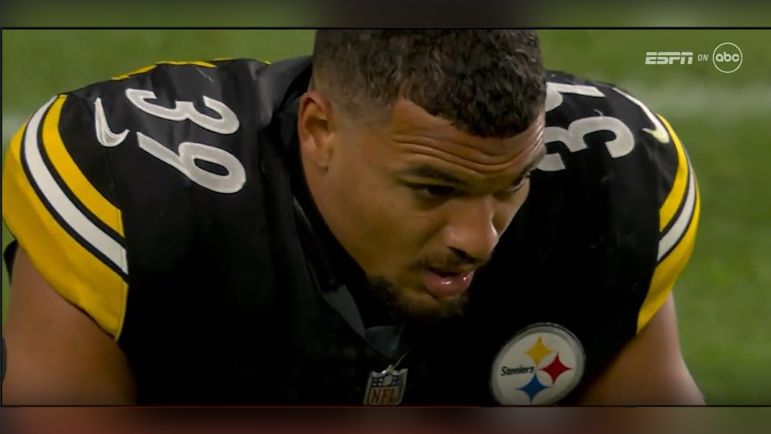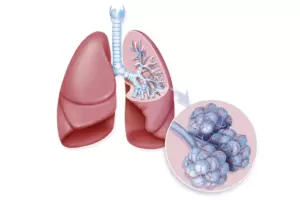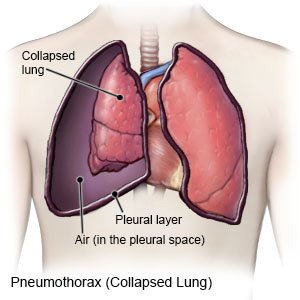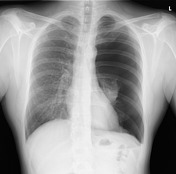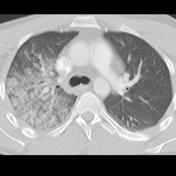In the Monday Night Football battle against the Cleveland Browns, it almost looked like the Pittsburgh Steelers could be without two of their defensive stars for a while. With defensive tackle Cam Heyward already on IR and likely out eight weeks, the team could not afford to lose safety Minkah Fitzpatrick for any considerable time. Yet early in the second half, he was reportedly being evaluated for a chest injury and questionable to return. Only five minutes later, he was ruled out for the rest of the game.
In his postgame media session, Head Coach Mike Tomlin revealed that Fitzpatrick was being evaluated at a local hospital for a chest injury. NFL Network’s Tom Pelissero reported early the following morning that he had been released that night and was expected to be fine after undergoing testing for a chest contusion.
So what exactly happened to Fitzpatrick? Let’s start with the play on which he was injured, as he chased down running back Jerome Ford, tripping him up just short of the end zone. Initially, Fitzpatrick seemed fine, as he popped right up, immediately signaling to the official that it wasn’t a touchdown.
A moment later, while the refs sorted out where to mark the ball, Fitzpatrick was shown down on one knee, looking like he was struggling to catch his breath. Even more concerning, he looked like he knew something was very wrong.
He headed to the sideline, doubling over near the trainers. Some fans thought he had vomited but he was probably coughing up blood. He left for the locker room and never returned to the sideline. He would have had a chest X-ray immediately to assess for rib fractures or a pneumothorax (punctured lung), which it seems were ruled out.
While his injury was described as a “chest contusion”, it seems almost certain that this was a pulmonary contusion rather than a chest wall contusion, which would not have required immediate transfer to a hospital. A pulmonary contusion is an injury rarely seen in the NFL but there have been cases in recent years.
Packers WR Randall Cobb required overnight observation in the hospital for a pulmonary contusion in January 2016, leaving a divisional-round playoff game against the Arizona Cardinals after a diving catch caused the injury. Cobb’s experience, which he described to “The Jim Rome Show” on Radio Row at the Super Bowl a few weeks later as reported by ESPN, is almost identical to what we witnessed with regard to Fitzpatrick:
“I made the catch. I got up and I felt fine, and I was walking back to the huddle, and I noticed that it started to get harder for me to breathe,” Cobb told Rome. “And then it felt like I was going to throw up; it felt like I was choking on something.
“So I went to throw up, and I started spitting up blood, and it was kind of a crazy moment. And then I went back and got a chest X-ray.”
Cobb raised the question of whether being mic’d up for the game led to the injury. He was wearing his microphone battery pack under his left shoulder pad, which he landed on as he fell to make the catch. He looked fine when he first got up and went to the sideline but then doubled over soon after that, as shown here:
In the Rams’ season finale at Seattle last January, rookie safety Russ Yeast sustained a pulmonary contusion while making a tackle. While it did not seem like a dramatic hit, the running back’s shoulder pad appeared to make impact on Yeast’s chest (he is wearing No. 21).
He did not show any distress after the play. He stayed on the field for the next two plays and was then taken by ambulance to a local hospital, where he remained for overnight observation. He was discharged the following day. The Rams did not make the playoffs, so it is not clear if Yeast would have been able to play the following week.
As always, we will start with a quick anatomy review.
The right and left lungs receive air via the trachea (windpipe), which divides into branches called bronchi and terminates in the alveoli, small bubble-like sacs that are surrounded by tiny vessels called capillaries. The blood passes through these small vessels, picking up oxygen to circulate throughout the body and releasing carbon dioxide.
A pulmonary contusion is an injury to the lung tissue typically caused by blunt force trauma but can also result from explosions or, less commonly, shock waves from associated penetrating trauma. Damage to the alveoli and capillaries leads to blood and fluid filling the lung space and sometimes causing those alveolar spaces to collapse. That part of the lung will not fill with air, so any blood circulating through that part of the lung will not get oxygenated.
The tissue injury can activate an immune response that causes a cascade of inflammatory reactions. If severe enough, the patient can develop Acute Respiratory Distress Syndrome and respiratory failure, requiring a high dose oxygen or even ventilator support.
Initial symptoms include shortness of breath and an increased respiratory rate as well as chest pain and hemoptysis (coughing up blood). When a pulmonary contusion is suspected in an athlete during a sideline evaluation, immediate evaluation includes the following:
- Chest X-ray to rule out a pneumothorax, which would require emergent placement of a chest tube to re-expand the lung
- Chest CT to assess the degree of the pulmonary contusion
- Supplemental oxygen
Here are examples of a pneumothorax as a schematic and seen on chest X-rays:
This is an example of the CT scan findings for a mild versus a more severe pulmonary contusion:
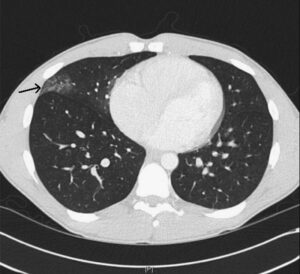
https://journals.lww.com/acsm-csmr/Fulltext/2013/03000/Pulmonary_Contusion_in_a_Football_Player.6.aspx
Treatment depends on the severity of the pulmonary contusion and starts with supportive care, including chest physiotherapy and incentive spirometry, which is commonly used in post-operative patients, to force the alveolar spaces to re-expand. Positive pressure ventilation may be necessary in more serious cases.
OK, you’ve made it this far, so now you want to know about recovery time. When will Fitzpatrick be back? The good news is that he most likely has a fairly mild pulmonary contusion and most resolve in as little as five to seven days. In a limited review of four college football players, all returned to some form of practice in two or three days and return to play ranged from seven to 10 days.
Fitzpatrick’s return to practice will depend on his symptoms, so if he is not having any respiratory issues he could rejoin his teammates today. I would guess that the coaching staff and trainers will err on the side of caution and have him rest for a day but I will not be surprised if he is at least practicing in limited fashion by Thursday. As far as air travel, it is safe to fly with a pulmonary contusion. And as a veteran player who knows the defense well, he could travel with the team to Las Vegas and play Sunday night even if he has not practiced yet.
For Minkah Fitzpatrick, what started as a a heroic play and quickly devolved into a worrisome situation now appears to be an injury that hopefully won’t cause him to miss any playing time.
“Melanie H. Friedlander, M.D., F.A.C.S. is a board-certified general surgeon at the Association of South Bay Surgeons in Torrance, California. She has developed and published many scientific studies in highly esteemed medical journals.”

